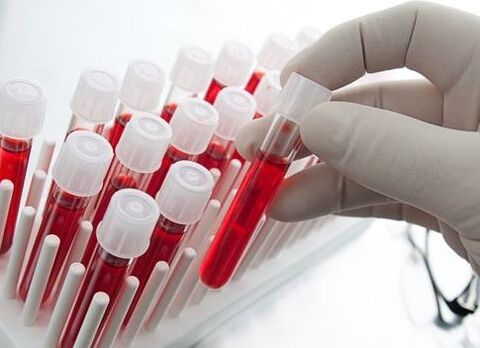The joint is painful, swollen, or difficult to move. What to do? Which doctor should I contact for this problem? What is the difference between arthritis and osteoarthritis? In our body, everything works, works and, consequently, wears out. Healthy cells repair themselves, but if this does not happen, it is necessary to look for the cause and its treatment.
Attention! Do not self-medicate, you can remove the symptoms, but the cause remains!
In small towns or countries, first of all, they go to a general practitioner, if a child has problems - to a pediatrician, and he already determines which narrow specialist to refer you to.
If you've been diagnosed with arthritis, don't confuse it with osteoarthritis. What is the difference between arthritis and osteoarthritis? Now we will understand how these diseases differ.
What is the difference between arthritis and osteoarthritis?
First difference in etiology:
- Arthritis can occur due to injury or infection, a malfunction of the metabolic system and is characterized by an inflammatory process.
- Osteoarthritis - is chronic, with it the joints wear out and deform.
The symptoms of diseases are also different - this is the second sign:
- Arthritis - can manifest itself in a latent form (chronic) or make itself felt immediately (acute form). It manifests itself as pain, fever, swelling, discolouration of the skin.
- Osteoarthritis may not necessarily be accompanied by painful symptoms. Sometimes the pain occurs after a long rest, but disappears after development, there is a crunch or click when moving.
Osteoarthritis affects people over the age of 50, athletes or the consequence of a severe fracture - after 40.
The third is the nature of the damage to the body:
- Arthritis affects the whole body. The inflammatory process affects the functioning of the internal organs: heart, liver, kidneys.
- Osteoarthritis: affects only the joint.
Fourth: how exactly are the joints damaged:
- Any joint can get arthritis.
- Osteoarthritis loves to affect the connective tissues, which are most affected by the load. These are the knee, ankle, hip and also the big toe joint.
In addition, scientific studies have shown that patients with arthritis on Earth make up 2% of the population, and osteoarthritis - 10%.
What is the diagnosis based on?

General blood test - blood from a finger. If arthrosis, as a rule, does not change the composition of the blood, then with arthritis the content of leukocytes and erythrocytes increases.
Rheumatic tests and biochemical analyzes are performed - it is taken from a vein on an empty stomach.
Osteoarthritis does not change the structure of the blood, with arthritis, inflammation markers increase.
Rheumatoid arthritis is manifested by the appearance of rheumatoid factor in the blood, and with gout - increased uric acid.
X-ray - shows at what stage of the disease, if there is a change in the structure of the bone - osteoarthritis. MRI and CT scans can also be ordered.
Which doctor treats arthritis and osteoarthritis?

As mentioned above, we first of all visit a general practitioner. Examine and refer to a rheumatologist, examine, diagnose and plan treatment.
What is the difference between arthritis and osteoarthritis? If your doctor has diagnosed osteoarthritis, you will order further tests to determine the stage of the disease.
Treatment occurs only with drugs, with the help of injections, ointments. First of all, the doctor recommends reducing the load and taking chondroprotectors. To improve blood circulation, a series of exercises is recommended.
The treatment should be complex, so the following doctors of a narrow specialization can also be involved: a physiotherapist, a masseur, a specialist in physiotherapy exercises, a surgeon.
In case of connective tissue diseases, they can be sent to a sanatorium for further treatment and healing.
An arthrologist is a doctor who works with joint problems. However, these specialists are found only in large clinics and it is difficult to reach them.
If the disease progresses and has passed into a difficult stage, you should contact an orthopedic surgeon. Depending on the need for treatment, you can perform two types of operations: organ preservation and endoprosthesis.
For the best treatment at each stage, specialists from different fields are involved, but the therapist or rheumatologist supervises the entire treatment.
Which doctor will treat arthritis depends on the cause.
- With an injury that served as an impetus, for development it will be necessary to visit a traumatologist.
- Rheumatoid - immune disease specialists.
- Metabolic disorders (gout) - nutritionist, endocrinologist, rheumatologist.
- Problems with the maxillofacial joint: dentist, ENT.
- With purulent: the intervention of a surgeon is required for the operation.
The doctor carries out the treatment in different directions: stop further destruction and restore the capacity of connective tissues.
Treatment should begin as soon as discomfort is felt. Thus, you will quickly feel relief, and the disease will bring minimal harm to the body.
Treatment regime
In any case, the doctor carries out the treatment according to the cause of the arthritis, but there is a standard scheme:
- Non-steroidal anti-inflammatory drugs (NSAIDs). First, a course of intramuscular, intravenous or intraarticular injections is carried out, ointments can be used for subsequent treatment.
- Antispasmodics (for muscle spasms).
- Antidepressants.
- Anesthetics.
- Gastroprotectors, to protect the stomach.
- A vitamin complex is prescribed.
- Chondroprotectors: improve the quality of cartilage tissue.
- Therapeutic diet.
- Physiotherapy.
- Massage, acupuncture.
This treatment regimen is supplemented depending on the course of the disease. The recovery process is long and laborious, even rehabilitation will require a lot of work on your part.




















